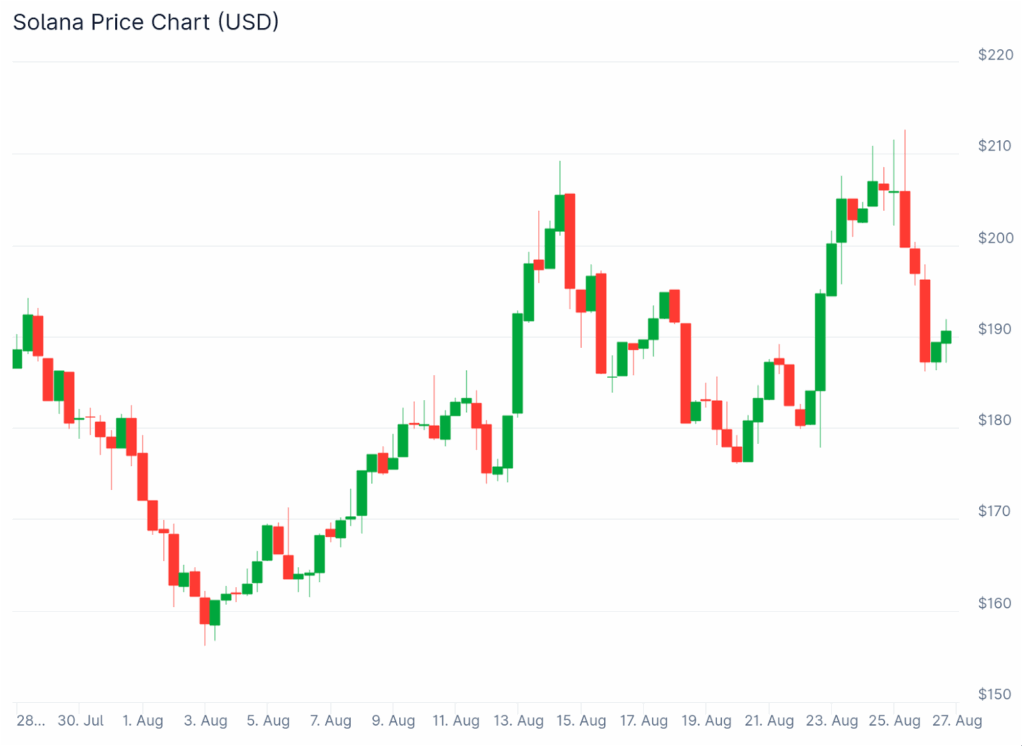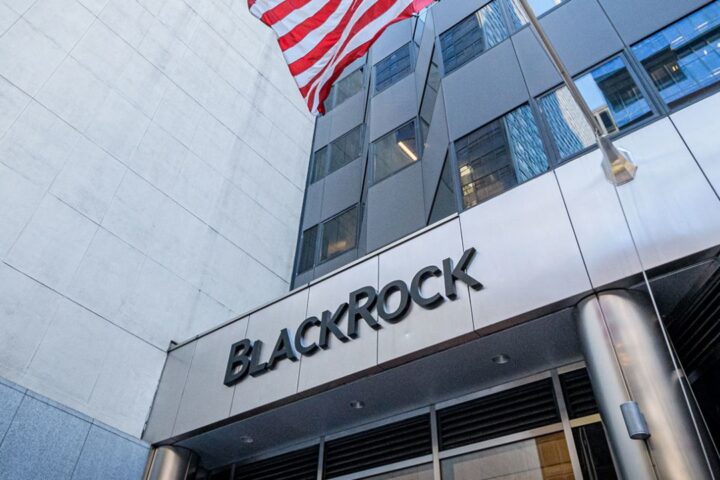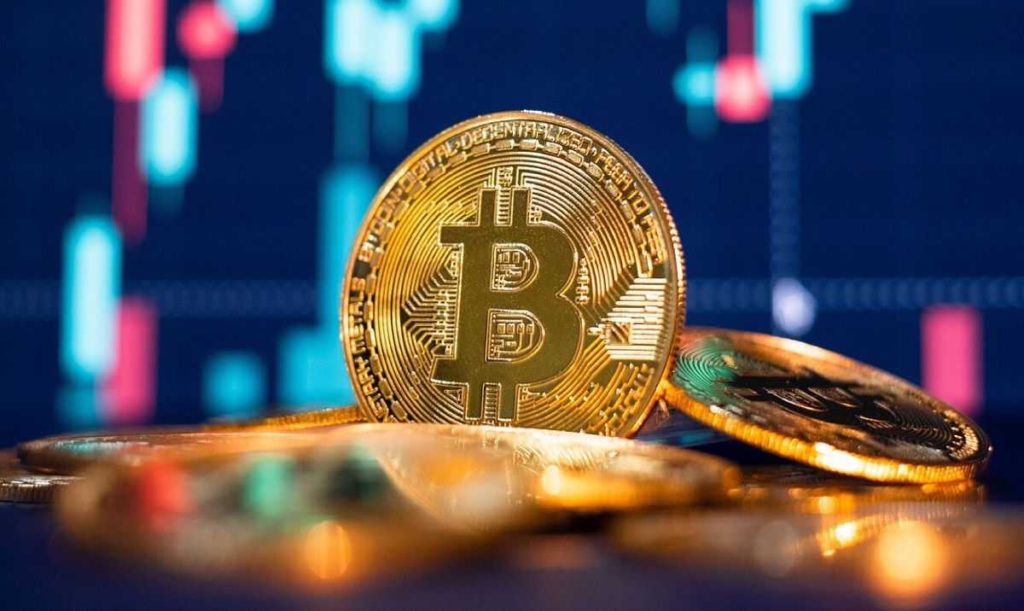Bitcoin continues to struggle around the $108,000 level, with traders facing renewed uncertainty amid signs of large-scale selling and muted market activity during the U.S. Labor Day holiday.
The cryptocurrency traded at $108,711 on Sunday, showing little momentum for a rebound as broader market sentiment weighed heavily on the asset.
Whale Selling and ETF Weakness
Investor confidence has been shaken by reports of long-dormant Bitcoin wallets transferring coins into the market, with some proceeds converted into Ether.
At the same time, inflows to spot Bitcoin ETFs have slowed, removing another source of support for prices.
This negative environment has been compounded by a weak performance in U.S. stock markets, with the Dow, S&P 500, and Nasdaq all closing the week lower.
President Trump’s shifting stance on tariffs and his attempts to exert influence over the Federal Reserve board have also added to the uncertainty.
Market Dynamics and Technical Signals
Some investors remain hopeful that the Fed could begin cutting interest rates as soon as late September or October. However, these expectations have done little to boost short-term sentiment.
From a technical perspective, activity in the perpetual futures market continues to dominate price action.
Data shows significant selling pressure from larger cohorts of traders on platforms like Binance, outweighing buying activity in both spot and futures markets.
Retail investors, however, appear more willing to buy dips, particularly in the $112,000–$111,000 range and again at $107,200. This buying activity marks the first significant upside order book signal since late June, when Bitcoin briefly fell below $98,000.
Key Support Levels
Charts suggest notable downside liquidity remains at $104,000, with shorter-term bids emerging at $105,000, $102,600, and $100,000.
Deeper bids in the $99,000 to $92,000 zone indicate some traders are preparing for further declines.
Despite the dip-buying enthusiasm, overall liquidity conditions favor sellers, making it harder for Bitcoin to establish sustained upward momentum.
With U.S. markets closed for the holiday and large Bitcoin holders continuing to offload positions, analysts believe downside risks will remain in play for the near term.
The crypto market has turned its attention to a massive Solana whale accumulation worth $100M.
More than 530,000 SOL was pulled from exchanges into private wallets, hinting at long-term confidence rather than short-term trading.
This comes as analysts anticipate a crypto market catalyst Q4 2025, potentially setting the stage for a wider altcoin season 2025.
But the story isn’t just about Solana. New players like MAGACOIN FINANCE, fully audited by HashEx, are entering the conversation.

Solana Whales and the 2025 Outlook
Large-scale Solana whale accumulation signals that institutional and high-net-worth investors are confident about long-term growth.
In August, around 530,000 SOL tokens, worth $100 million, were moved off exchanges into private holdings. Such moves often reduce selling pressure and set the stage for price appreciation.

ETF talk adds fuel to the story. The SEC’s 2025 Global ETF Outlook highlighted expansion beyond Bitcoin and Ethereum, putting Solana in line for potential spot ETF listings.
Grayscale has also signaled intent to push for a SOL ETF by 2026. These developments could attract mainstream investment, making Solana a contender for the top crypto to invest in 2025.
From a technical perspective, analysts place the Solana price prediction 2025 around $280, provided it clears the $230 resistance zone. With treasury initiatives like Pantera’s $1.25 billion Solana-focused fund, institutional demand could continue to build.
When compared in the Ethereum vs Solana debate, Solana’s speed and efficiency make it attractive, particularly for retail users chasing lower fees during altcoin season 2025.
MAGACOIN FINANCE: The Rising Catalyst for Altcoin Season
Alongside Solana, MAGACOIN FINANCE is drawing increasing attention. Insiders report that whales are not only stacking SOL but also allocating into MAGACOIN.
What’s catching eyes is the project’s projected 11,200% ROI and the fact it has already passed a full audit by HashEx, one of the top blockchain security firms.
This independent verification strengthens trust for retail buyers who see MAGACOIN as a secure, growth-driven alternative.
To sweeten early participation, the project offers a PATRIOT50X bonus code, giving buyers a 50% bonus on entry.
Such mechanics make it appealing to investors looking for the best altcoin to buy now ahead of what could be a strong crypto market catalyst Q4 2025.
For many traders, MAGACOIN FINANCE is being positioned as more than a speculative play—it’s viewed as one of the top crypto to invest in 2025, thanks to its security credentials and ambitious growth forecasts.

Can Q4 2025 Spark the Next Altcoin Season?
With institutions backing Solana and retail investors eyeing projects like MAGACOIN, conditions are aligning for a powerful altcoin season 2025.
Whale movements, ETF expansion, and treasury investments are all bullish signs, but retail-driven growth in audited projects could be just as impactful.
The Ethereum vs Solana rivalry will continue, but the bigger story is how the broader altcoin market responds to new demand drivers.
For anyone hunting for the best altcoin to buy now, the message is clear: watch the whales, track ETF signals, and don’t overlook rising stars like MAGACOIN FINANCE.
To learn more about MAGACOIN FINANCE, visit:
Website: https://magacoinfinance.com
Twitter/X: https://x.com/magacoinfinance
Telegram: https://t.me/magacoinfinance
Bitcoin has suffered a sharp pullback after hitting its all-time high earlier this year.
The cryptocurrency has fallen more than 13.75% from its record peak of $124,500, now trading at around $108,791.
This drop broke below its multiyear uptrend support, raising concerns of a deeper market correction.
Historical Patterns Raise Red Flags
Bitcoin’s bull markets have traditionally relied on parabolic support curves as a foundation for sustained rallies.
Temporary dips below this curve have not always been fatal, so long as the relative strength index (RSI) maintained its momentum.
Trouble has historically emerged when both parabola and RSI support failed.
In 2013, that scenario triggered an 85% crash from $1,150 to $150.
A similar breakdown in 2017 led to an 84% plunge from nearly $20,000 to $3,100.
Again in 2021, Bitcoin lost both supports and tumbled 77% from $69,000 to roughly $15,500.
The Current Outlook
By late August 2025, Bitcoin slipped under its long-term trendline support.
However, RSI remains above its critical uptrend, leaving some room for optimism.
The key test will come if RSI weakens.
A breakdown there could send Bitcoin toward its 50-week exponential moving average, around $80,000, by year’s end.
Such a move would mirror previous cycle corrections that reset investor sentiment before renewed rallies.
Analysts Suggest Pullback Could Be Temporary
Some analysts argue that the current correction may not signal the end of the bull cycle.
BitBull, a popular crypto market commentator, described the recent breakdown as a possible “fakeout.”
Even a move briefly under $100,000 could fit Bitcoin’s historical pattern of forcing out weaker hands before rebounding, he argued.
That would put the $80,000–$100,000 range as both a bearish target and a potential launchpad for the next upward move.
Cycle Indicators Suggest Room to Grow
Market analyst SuperBro pointed to the Pi Cycle Top model, a long-trusted tool for identifying Bitcoin’s cycle peaks.
The model tracks two moving averages: the 111-day simple moving average and twice the 350-day simple moving average.
When the 111-day line rises to cross above the 350-day x2 line, it has historically marked major cycle tops.
These crossovers were evident in 2013, 2017, and 2021 — each followed by sharp corrections.
At present, however, the crossover has not occurred.
SuperBro believes this indicates Bitcoin has not yet reached its peak and forecasts a possible top at $280,000.
Investor Sentiment at a Crossroads
Despite the pullback, Bitcoin’s long-term cycle signals remain intact.
For now, the correction resembles past volatility episodes that preceded stronger rallies.
If RSI holds and cycle indicators stay supportive, analysts suggest that the latest decline could ultimately prove to be a consolidation phase rather than the start of a long downturn.
Conversations in the meme coin market have picked up again as community members weigh the ever-constant question: Will Dogecoin (DOGE) or Shiba Inu (SHIB) lead the meme coin market in the upcoming bull cycle?
The entire meme coin market is worth around $73 billion, which could grow further should current momentum be sustained into October. Beyond Shiba Inu and Dogecoin, meme coin investors are also spotlighting newer players such as MAGACOIN FINANCE—a secured and fully audited project—in their list of the best meme coins to buy in 2025.
Dogecoin vs Shiba Inu: Who Holds the Edge?
Dogecoin has been holding steady around $0.21–$0.22 after a brief rally to $0.25. Whales have scooped up more than 680 million DOGE this month, showing strong confidence. If DOGE can break above $0.23, analysts say a move toward $0.28 is possible, with ETF speculation adding fuel. Beyond price, Dogecoin’s ecosystem is expanding with upgrades like RadioDoge, designed to boost real-world use cases.
Shiba Inu, on the other hand, has faced a tougher month. Shibarium’s new governance features are promising, but SHIB’s burn rate dropped nearly 99%, raising doubts about its deflationary strength.
Price action has been weak, slipping around 3% to $0.0000124. Still, whales buying more than $1.6 million in SHIB suggest strategic accumulation. With DAO elections, AI partnerships, and even a SHIB-backed stablecoin planned for 2026, SHIB remains on many lists of the best meme coins to buy now despite short-term setbacks.

MAGACOIN FINANCE: Investors Growing, Analysts Watchlist
While older names battle for dominance, MAGACOIN FINANCE is carving out its place among the best meme coins to buy in 2025.
On-chain data shows demand for MAGACOIN FINANCE is growing fast. Analysts who track high upside projects have also noted the attention in the token, predicting it could outperform leaders such as DOGE and SHIB.
With the community growing and attention spreading through the crypto market, investors now have a limited-time opportunity to get into MAGACOIN FINANCE. By using the code PATRIOT50X, early investors can gain an exclusive 50% EXTRA bonus.
For smart investors, MAGACOIN FINANCE may be the best meme coin to buy now as the market slowly recovers.

Why Investors Are Watching Meme Coins Closely
With capital rotating in the crypto market, meme coins remain one of the best strategic plays for investors hoping to ride the next bull cycle wave. With meme coins delivering sporadic returns in previous cycles, history is bound to repeat itself.
While DOGE and SHIB continue to command high community energy and whale-driven momentum, investors say MAGACOIN FINANCE is the meme token quietly gaining traction, especially as the competition for the best meme coins to buy now is heating up.
To learn more about MAGACOIN FINANCE, visit:
Website: https://magacoinfinance.com
Twitter/X: https://x.com/magacoinfinance
Telegram: https://t.me/magacoinfinance
Crypto asset manager 21Shares has filed an application with the U.S. Securities and Exchange Commission to launch an exchange-traded fund tied to the price of SEI.
The proposal, submitted through an S-1 registration statement, would use price data from CF Benchmarks, which aggregates information across multiple crypto exchanges.
If approved, the fund would mark the first SEI-linked ETF available to U.S. investors.
What is SEI?
SEI is the native token of the Sei blockchain, a layer-1 network launched in August 2023.
The platform focuses on decentralized exchange trading infrastructure and marketplace activity.
The token itself can be used to pay transaction fees and participate in governance decisions.
As of now, SEI trades around $0.30, placing it in the mid-70s by market capitalization rankings.
Custody and Staking Options
Under the plan, Coinbase Custody Trust Company would serve as the custodian for SEI held by the ETF.
In its filing, 21Shares also raised the possibility of staking SEI to generate extra income for the fund.
However, the firm emphasized it is still assessing whether staking could expose investors to legal or tax complications.
Competing Applications
The move comes just months after Canary Capital filed for its own SEI ETF in April.
That proposal would give both institutional and retail investors exposure to staked SEI, with returns boosted by staking rewards.
Justin Barlow, executive director of the Sei Development Foundation, welcomed the idea of ETFs tied to the project.
He said they act as “a gateway for broader adoption, providing a vital bridge between crypto and mainstream markets.”
Broader ETF Landscape
Currently, the only spot crypto ETFs approved in the U.S. track Bitcoin and Ethereum.
However, there is a growing wave of applications for products tied to other blockchains.
21Shares itself already operates the ARK 21Shares Bitcoin ETF and has applied for funds covering assets such as SUI, XRP, and Ondo Finance.
Other major issuers including VanEck, Grayscale, and Bitwise are pursuing ETFs linked to Solana, Cardano, and even memecoins like Dogecoin.
Regulatory Developments
In an effort to streamline the process, the SEC is reportedly considering a system that would automatically approve certain ETFs after 75 days unless the agency raises formal objections.
This would reduce the lengthy back-and-forth that has often slowed crypto ETF approvals in the past.
21Shares, for its part, described its SEI filing as a “key milestone in our vision to expand exchange-traded access to the SEI Network.”
Outlook
With two filings now on the table, the race is on to see which firm, if any, will bring the first SEI ETF to U.S. markets.
While regulatory hurdles remain, the growing number of applications suggests rising demand for diversified crypto investment products that go beyond Bitcoin and Ethereum.
For SEI, approval of such a fund could mark a major step in its journey from a newly launched blockchain to a mainstream investment asset.
Jan van Eck, the CEO of investment management firm VanEck, has suggested that Ethereum will emerge as the dominant blockchain as banks prepare for a wave of stablecoin adoption.
In an interview with Fox News Business on Wednesday, van Eck explained that financial institutions will inevitably need to integrate blockchain infrastructure to handle stablecoin transactions.
“It’s very much what I call the Wall Street token,” van Eck said.
“And what I mean by that is, if you think that because of stablecoins, now every bank and every financial services company has to have a way of taking in stablecoins.”
He added that the eventual “winner” will likely be Ethereum or a network built on similar technology, known as ECM.
U.S. Law and Stablecoin Growth
The timing of van Eck’s remarks comes shortly after the passage of the Genius Act, a landmark U.S. law signed by President Donald Trump in July.
The legislation is the first federal law focused exclusively on payment stablecoins, marking a turning point in how regulators approach digital assets.
At the same time, the stablecoin market has swelled, with the total supply surpassing $280 billion in recent weeks.
A report published on May 14 by Fireblocks revealed that 90% of institutional investors surveyed are actively exploring stablecoin use within their operations.
Financial Institutions Facing Pressure
Van Eck argued that financial institutions will have no choice but to adapt to the shift toward stablecoins or risk being left behind.
“Companies have to employ technology to enable stablecoin usage over the next 12 months,” he said.
“It will take a while, but no financial services company wants to say, ‘no, don’t send me that digital dollar.’”
He stressed that if banks fail to accommodate stablecoin transfers, customers will inevitably turn to alternative institutions.
This sentiment was echoed earlier this year by Eric Trump, executive vice president of the Trump Organization, who warned that banks unwilling to embrace crypto could be extinct within a decade.
VanEck’s Ethereum ETF and Market Performance
Van Eck’s perspective is partly influenced by his firm’s direct involvement with Ethereum.
In July 2024, the U.S. Securities and Exchange Commission approved VanEck’s launch of an Ethereum-based exchange-traded fund (ETF).
The product tracks the price of Ether (ETH) but does not directly hold the asset.
As of Wednesday, the ETF held more than $284 million in assets under management.
Meanwhile, Ethereum itself continues to demonstrate strong market momentum.
On Sunday, Ether reached a new all-time high of $4,946, though it has since retraced slightly and was trading at $4,566, down 1% over the last 24 hours.
Corporate Adoption Bolsters Ethereum Narrative
Beyond speculation, Ethereum’s real-world adoption has gained traction as corporations add Ether to their treasuries.
Matt Hougan, chief investment officer at Bitwise, argued earlier this year that Ethereum’s treasury adoption has addressed its “narrative problem.”
By presenting ETH as a corporate treasury asset, the platform has become more accessible to traditional investors, drawing significant new inflows.
In the past month alone, corporate treasuries have purchased more than $6 billion worth of Ether, with firms such as BitMine and SharpLink among the most active buyers.
This wave of adoption reinforces van Eck’s belief that Ethereum will remain central as stablecoins reshape global finance.
Around 27% of British adults would consider including cryptocurrency in their retirement plans, according to a new survey by Aviva.
The findings suggest that crypto could eventually capture a portion of the UK’s multitrillion-pound pension market.
Of those open to crypto in retirement funds, just over 40% said they were motivated by the potential for higher returns.
The survey, conducted by Censuswide between June 4 and 6, polled 2,000 UK adults.
Pension Withdrawals Already Taking Place
The study also revealed that 23% of respondents would consider withdrawing part, or all, of their existing pension savings to invest in crypto.
With over 80% of UK adults holding pensions worth a combined £3.8 trillion, widespread adoption could direct significant capital into the sector.
The survey follows developments in the United States, where President Donald Trump recently signed an executive order permitting 401(k) retirement plans to include Bitcoin and other cryptocurrencies.
The U.S. order potentially opens crypto access to more than $9 trillion in retirement assets.
Young Investors Lead the Way
One in five UK adults surveyed — equivalent to around 11.6 million people — reported holding or having previously held crypto.
Two-thirds of that group still own some form of digital assets.
Among younger investors, particularly those aged 25 to 34, nearly 20% said they had already withdrawn pension funds to invest in crypto.
That group formed a large portion of the 8% of all respondents who admitted to doing the same.
Risks Remain a Major Concern
Despite growing interest, respondents flagged security and regulatory issues as leading concerns.
Hacking and phishing were cited as the biggest risks by 41% of participants, while 37% pointed to a lack of oversight and consumer protection.
Price volatility was identified as the third biggest worry at 30%.
Aviva’s managing director of wealth and advice, Michele Golunska, acknowledged crypto’s appeal but urged caution.
“We mustn’t forget the value of the good old pension,” she said.
“It comes with some powerful benefits, like employer contributions and tax relief, that can make a real difference to your long-term financial wellbeing.”
Regulation Moves Slowly
The UK has been taking gradual steps toward stronger crypto oversight.
In May, regulators unveiled a draft framework to treat exchanges and service providers more like traditional financial firms, focusing on compliance, transparency, and consumer protection.
Banks have been slower to embrace crypto.
According to another survey, 40% of UK investors reported their bank had either blocked or delayed payments to crypto providers.
This cautious approach shows that while enthusiasm for crypto pensions is growing, significant barriers remain.
Sportsbet.io has announced the addition of four new ambassadors to its “Join the Crypto Experience” program, expanding its diverse roster of creators and influencers who embody the brand’s fun, fast and fair ethos.
Kofoworola Adetimilehin, known to her fast-growing fanbase as Rola, is a fearless football voice reshaping how women cover the beautiful game. She is a writer, podcaster, and content creator who shares stories that blend passion, culture and everyday fan life.
Benjamin Dimah, or Benopaonyx to his followers, is a crypto and gaming influencer who helped people around the world explore digital assets. He’ll be sharing the benefits of betting with crypto at Sportsbet.io.
Rachel Ochanya, winner of the Face of Hope Beauty Pageant Foundation 2025, brings a touch of elegance to the team. She fuses style with sport, making her another perfect match for Sportsbet.io.
Rounding out the group is MC Galaxy, a musician, dancer, comedian and one of Nigeria’s most vibrant entertainers. He’s earned the nickname “The Oracle” for his confident, and often accurate, football predictions he shares on a popular WhatsApp group.
The quartet of new ambassadors showcase how Sportsbet.io’s “Join the Crypto Experience” continues to gain momentum, uniting bold voices from sport, entertainment and crypto into an all-star team.
Do you have what it takes to join? Visit https://jointhecryptoexperience.io/ to find out more
About Sportsbet.io
Founded in 2016 as part of Yolo Group, Sportsbet.io is the leading crypto sportsbook. Sportsbet.io has redefined the online betting space by combining cutting-edge technology, with cryptocurrency expertise and a passion for offering its players with the ultimate fun, fast and fair gaming experience.
Official Regional Partner of LALIGA, Sportsbet.io provides an expansive range of betting action across all major sports and eSports, offering players more than 1M pre-match events per year and comprehensive in-play content.
As the first crypto sportsbook to introduce a cash out function, Sportsbet.io is recognised as a leader in both online sports betting and within the crypto community.
In December 2023, a lucky Sportsbet.io won the biggest ever online slots jackpot while playing on the site, turning a $50 spin into a prize of more than $42 million.
Sportsbet.io prides itself on its secure and trustworthy betting service, with withdrawal times of less than 90 seconds, among the fastest in the industry.
For more information about Sportsbet.io, please visit https://sportsbet.io.
ETHZilla, a former biotechnology firm now fully pivoted into cryptocurrency, has authorized a $250 million share repurchase program.
The decision, announced Monday, allows the company’s board of directors to buy back outstanding common shares in an effort to return value to investors.
The move comes less than one month after the company rebranded from 180 Life Sciences and shifted its strategy to focus on Ethereum.
That pivot has been transformative for ETHZilla’s battered stock, which has rebounded since the firm began positioning Ether as its central treasury asset.
Large ETH Holdings Drive Momentum
ETHZilla disclosed that it has acquired 102,237 ETH at an average purchase price of $3,948.72, spending just over $403 million.
At current valuations, those holdings are worth approximately $489 million.
The company also revealed that its most recent purchases would be staked with Electric Capital, signaling an intent to generate additional yield from its digital assets.
Management cited “market conditions,” “management discretion,” and “alternative uses of capital” as justification for the repurchase — language commonly used in traditional buyback announcements.
Financial Struggles Underneath the Shift
Despite its renewed focus, ETHZilla continues to face underlying financial challenges.
As a public company, it has reported weak revenues, consistent losses, and shareholder dilution.
Its most recent filings showed an accumulated deficit of more than $141.5 million, raising questions about how sustainable its new crypto-driven model may be.
Still, ETHZilla is not the only firm making such a move.
Other companies — including BitMine Immersion Technologies, The Ether Machine, SharpLink Gaming, Bit Digital, and Ether Capital Corp. — have all added Ether to their balance sheets.
Analysts Weigh In on Risks
Observers see echoes of past waves of corporate adoption, such as when companies turned to gold as a balance-sheet hedge.
But analysts warn that leverage and concentration risks could undermine the strategy.
Firms borrowing heavily to accumulate ETH may face worsening financials in the event of a bear market, potentially leading to forced liquidations.
Mike Foy, chief financial officer at Amina Bank, said it is still unclear whether the model can be sustainable.
“It’s important to determine whether companies are pursuing the approach for speculative gains, signaling purposes or as part of a broader strategic plan,” he told Cointelegraph.
“If any of these [purchases] seem strange or out of the ordinary, then this is possibly a sign that this isn’t a long-term plan but rather a short-term share price play.”
Treasury Firms Versus ETFs
Kadan Stadelmann, chief technology officer at Komodo Platform, noted that Ethereum treasury firms offer advantages unavailable to spot ETFs.
“Spot ETFs cannot legally offer staking and DeFi,” he said.
“Ethereum treasury firms offer higher yields.”
However, he warned that the model comes with significant risks.
“ETH treasury firms have risks, such as overleveraging,” Stadelmann cautioned.
In a downturn, that could trigger cascading effects across the ETH market.
Anthony DeMartino, founder and CEO of Sentora Research, highlighted that Ether is the most exposed of all crypto treasuries.
Roughly 3.4% of the asset’s total supply is now held by such entities, amplifying potential market consequences.
Strategy, the business intelligence firm led by Michael Saylor, appears ready to execute its third Bitcoin acquisition in August, continuing its aggressive accumulation strategy despite recent market headwinds.
If completed, the purchase would add to two smaller transactions already made this month, marking a rare departure from the company’s history of large-scale acquisitions.
The most recent buy took place on August 18, when Strategy purchased 430 BTC for roughly $51.4 million.
That brought its total holdings to 629,376 BTC, worth over $72 billion at current market prices.
Strategy’s Bitcoin Holdings Surge in Value
According to monitoring site SaylorTracker, Strategy’s Bitcoin investment has generated an unrealized gain of more than 56%, equating to $25.8 billion at present valuations.
Despite scaling back the size of recent purchases, Strategy continues to dwarf all other corporate Bitcoin holders, maintaining its status as the largest treasury by a wide margin.
So far in August, the company has added only 585 BTC, far below the thousands or even tens of thousands it typically acquires in single transactions.
Advocating Bitcoin to Institutions
Michael Saylor has become one of the most prominent advocates of Bitcoin in the corporate world.
His push to “orange-pill” both institutional and retail investors has helped shift attitudes in finance, positioning Bitcoin as a legitimate treasury reserve asset.
Strategy’s ongoing purchases reinforce its commitment to that narrative, even as broader equity markets face challenges.
Purchases Do Not Move Markets
One common question is whether Strategy’s large-scale buying activity impacts Bitcoin’s market price.
Shirish Jajodia, the company’s corporate treasurer, recently addressed the issue in a podcast interview with Natalie Brunell.
He explained that Strategy uses over-the-counter (OTC) channels and private deals rather than buying on open spot exchanges.
This method avoids sudden price spikes and prevents significant disruption to Bitcoin’s liquidity.
“Bitcoin’s trading volume is over $50 billion in any 24 hours — that’s huge volume,” Jajodia said.
“So, if you are buying $1 billion over a couple of days, it’s not actually moving the market that much.”
Stock Performance Faces Pressure
While the company’s Bitcoin position continues to grow in value, Strategy’s stock has struggled in recent months.
Shares fell to around $325 on Wednesday, the lowest in nearly four months, before recovering to $358 by Friday.
The decline reflects wider challenges facing Bitcoin-related equities, as treasury-focused firms see their share prices closely tied to crypto sentiment.
Still, the company has signaled it will continue adding to its Bitcoin reserves regardless of stock performance, maintaining its conviction that BTC represents the strongest long-term store of value.
Long-Term Commitment Remains Clear
Despite volatility in both crypto and equity markets, Strategy’s stance on Bitcoin remains unwavering.
The company’s purchases this month may be smaller, but they underline a strategy of consistent accumulation that has made it the largest corporate Bitcoin holder worldwide.
As Saylor signals yet another buy, Strategy is reaffirming its role at the forefront of Bitcoin adoption among institutions, even as the market weighs short-term risks.












